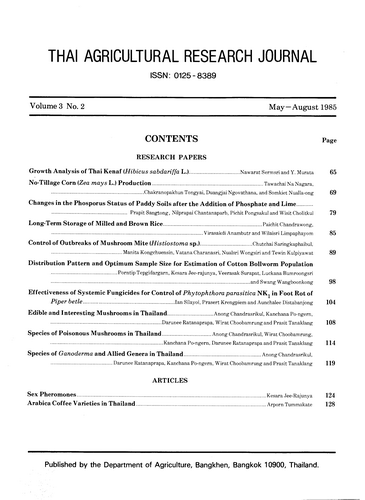Distribution Pattern and Optimum Sample Size for Estimation of Cotton Bollworm Population
Abstract
The distribution pattern and optimum sample size for estimation of cotton bollworm (Heliothis armigera Hubner) population were conducted in 1982-1984 at Suphanbrui and Nakornsawan Field Crops Research centres and Loei Field Crops Experiment Station. for each year, larvae were enumerated on all cotton plants in the experimental fields for every 15-20 days during 30 - 110 days old of cotton. The result indicated that if mean of larvae per plant was 0.2 or more, during 50 - 110 days old of cotton, the distribution pattern was clumped and could be represented by the Negative Binomial Theoretical Distribution. The k values of the Nehgative Binomial Distribution and means of larvae per plant were 0.964-7.580 and 0.215-3.249, respectively. If mean of larvae per plant was less than 0.2, the distribution pattern was considered as Poisson Distribution. The optimum sample size waried conversely with the larval density. Number of cotton plant varied from 5 - 243 plants while means of larvae per plant varied from 0.1 - 3.2.
Downloads
Published
How to Cite
Issue
Section
License
Thai Agricultural Research Journal



